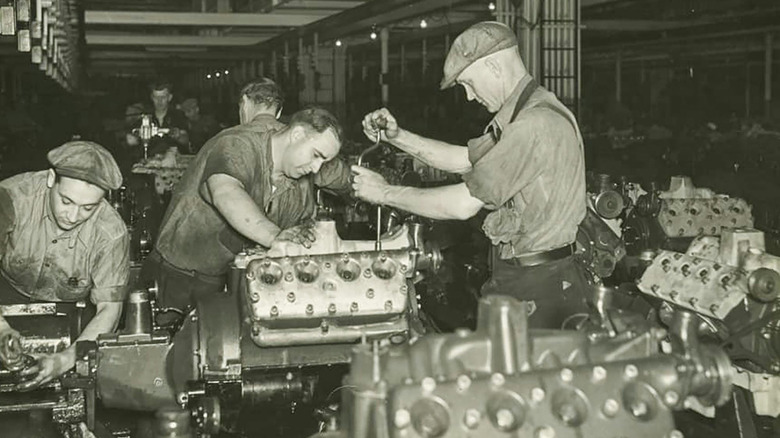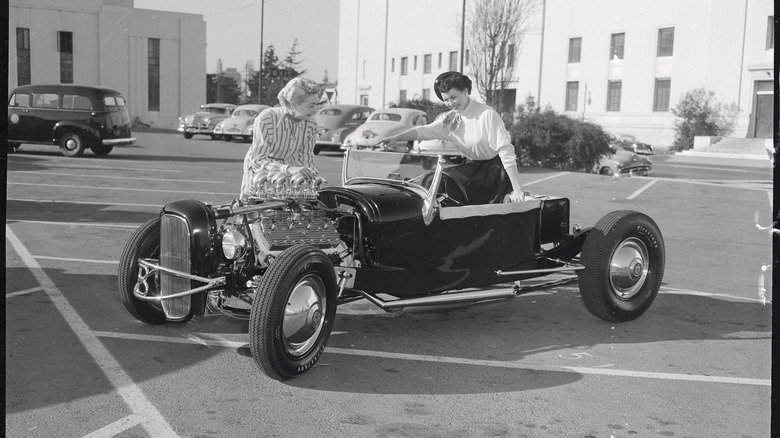For the first few decades of the 20th century, V8 engines were finicky, expensive things reserved for low-production luxury cars. Fancy pants Cadillacs and LaSalles were powered by V8s, while more proletarian vehicles like Ford’s Model A and Chevrolet’s Universal AD made do with inline fours and sixes. Ford changed all of that in 1932 with the introduction of the 221 cubic inch flathead V8.
The Ford flathead was revolutionary, but why? It wasn’t the first automotive V8 — that was either Rolls-Royce’s extremely limited-edition 3.5-liter engine from 1905 or, arguably Leon Levavasseur’s Antoinette V8. It wasn’t the biggest (Cadillac L-heads were bigger), or the most powerful (the rare Cunningham V8 put down 90 horsepower in 1920), either. It was, however, simple, lightweight, reliable and cheap, all of which were extremely on-brand for Ford at the time. It hit an automotive industry dominated by small-displacement fours, inline sixes and supercharged straight eights like a hydrogen bomb, and would eventually help give birth to mid-century hot rodding.
Let’s go racin’!
Almost immediately upon its introduction, gearheads were racing Fords powered by the new flathead V8. In 1933, less than a year after their debut, flatheads were setting records at the Elgin National Road Race. In 1934, flatheads were doing 109 mile-per-hour laps at the Indy 500, and flathead-powered racers took the podium at the first Daytona Beach stock car race in 1936. A vibrant aftermarket grew up around the flathead, providing go-fast parts ranging from performance manifolds and camshafts to superchargers and even overhead valve conversion cylinder heads. If you had a flathead in the 30s and wanted to make it go real fast, the world was your oyster.
By the end of WWII, Ford’s flathead had been on the market in one form or another for more than a decade. Millions of the finest V8 mills Dearborn could produce had been stuffed into everything from workaday sedans and trucks to Avro Lancaster heavy bombers. As millions of young Americans returned home from The War, they needed cheap transportation to get them to their new jobs or GI Bill-backed educations. Used, flathead-powered Fords were cheap and thick on the ground, and newly demobbed GIs snapped them up wholesale.
The birth of cool
In the 50s, especially after they were discontinued in favor of the new overhead valve Y-block, flatheads were a dime a dozen in scrapyards all over the country. The availability and affordability of these cast-off flatheads, the sheer volume of speed parts produced for them, and the increased spending power and leisure time of the growing postwar middle class led directly to the birth of the hot rod movement as we know it today.
Flathead-powered hot rods continued to be popular throughout the 20th century. Even with the rise of the arguably superior small block Chevy and Ford 351 mills, hot rodders kept shoving flatheads into their creations due to their availability and versatility. Eventually however, flathead stocks began to dry up as they wore out or were blown up by enthusiastic gearheads, and they were superseded by more modern overhead valve mills.
Today, nearly a century after its introduction, Ford’s flathead V8 is still a go-to choice in certain segments of the hot rodding scene. This is especially true with builders who prefer more traditional hot rod styles, or the wild-eyed grease monkeys who build rat rods. While hot rodding tastes may change, it seems that the trusty old Ford flathead will never go out of style.


